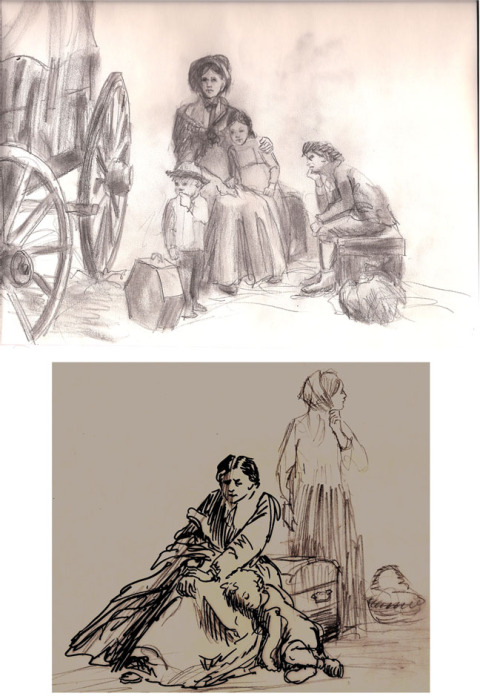Sometime in 1987 I walked into the studio of my father, Harold Hopkinson. He had some costumes that he wanted me to wear. I was to pose as a Founding Father (actually several Founding Fathers as it turned out). He was working on a very large painting depicting a vision that Wilford Woodruff had when he was presiding over the St. George Temple in 1877. Apostle Woodruff had this to say: I will here say... that two weeks before I left St. George, the spirits of the dead gathered around me, wanting to know why we did not redeem them. Said they,
"You have had the use of the Endowment House for a number of years, and yet nothing has ever been done for us. We laid the foundation of the government you now enjoy, and we never apostatized from it, but we remained true to it and were faithful to God."
These were the signers of the Declaration of Independence, and they waited on me for two days and two nights. (Journal of Discourses, Vol.19, pp. 229-31; September 16, 1877)
In the fifteen years that I had been a practicing full time artist my relationship with my father (also a full time professional artist) was very close personally and professionally. We had many shows together, we often painted together and we relied upon each other for totally honest discussions and critiques of one another’s paintings.
I was very impressed by the scope and complexity of the painting of the Founding Fathers that he had started on. He had dozens sketches and many reproductions of portraits of such people as George Washington, Thomas Jefferson and Benjamin Franklin around the studio. That was the first I had ever heard of Wilford Woodruff’s vision.
Over the next few months as I worked upon my own projects in my studio I would frequently visit Dad at his studio where he would often ask me to pose and would always ask for my opinion. My main contribution was kind of like in the movie “The Agony and the Ecstasy” where Rex Harrison as Pope Julius II would enter the Sistine Chapel and shout at Charlton Heston’s Michelangelo up high on the scaffold, “When will you be done?” and Heston would shout back, “When I am finished!”
It wasn’t quite so dramatic as that, but I kept telling Dad that he wasn’t finished. He needed to do more. He had been working on it for months and was getting pretty tired of it, but as was his working nature, he just simply kept grinding on until he announced for the umpteenth time “I am finished!” And finally it was.
The painting “That We May Be Redeemed” by Harold I. Hopkinson is now hanging in the St. George Temple.
Now many years gone by and I have done my own version of “That We May Be Redeemed”. I have chosen to paint the same feeling of light and mood and have placed the Founding Fathers visiting Wilford Woodruff in a similar manner as is in my father’s painting. I decided that I liked Wilford Woodruff sitting naturally at a desk when George Washington addresses him. I used much of the same research but decided to pose new models for the most part. (I did find a couple of photos of me as a young man in 18th century costumes that I used). I pulled out my “artist license” at least once when I decided that the side burns that Wilford Woodruff usually wore were distracting and so I left them off.
My father passed away several years ago and so in my painting “That We May Be Redeemed” (as in my life) I am building on the gifts that my father gave me. Dad, thanks for everything, and if you are working on some great celestial mural, up on some celestial easle, with a few million celestial colors on the pallet, and you can wait for another three or four decades, then save a big section of canvas for me to paint and I’ll join you. If we decide to do this project again, you won’t have to have me pose, but perhaps we can go right to the source and have Wilford, George, Thomas, Ben and others don their costumes and pose while we paint a true “heavenly masterpiece”! But that is for later! Much, much later.




















